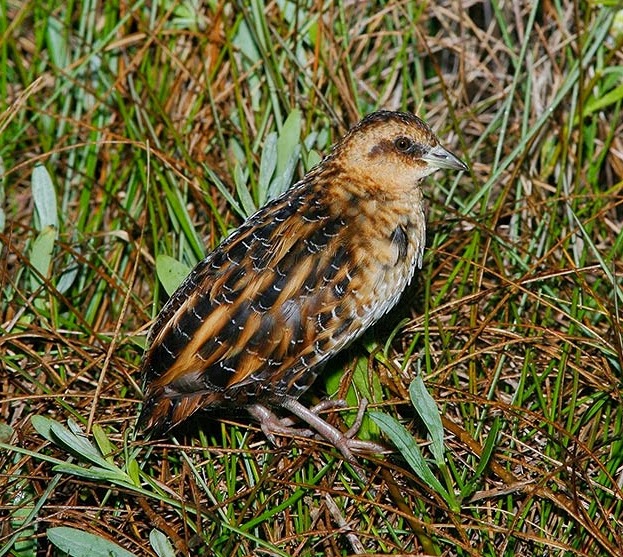 |
| Photo by Brian Small (Ministry of Natural Resources) |
Common name:
yellow rail (en); franga-d’água-amarela (pt); râle jaune (fr); polluela amarillenta (es); gelbralle (de)
Taxonomy:
Order Gruiformes
Family Rallidae
Range:
This species breeds in central and western Canada, from eastern Alberta and the south-eastern Northwest Territories to southern Quebec and New Brunswick, and also in the north-eastern United States, from north-eastern Montana to Maine. They migrate south to winter along the coasts of the south-eastern United States, from North Carolina to Texas.
Size:
These birds are 15-19 cm long and have a wingspan of 28-32 cm. They weigh 40-70 g.
Habitat:
The yellow rail breeds in shallow marshes dominated by sedges and grasses, also using wet grasslands and hay fields. Outside the breeding season they also use arable land, rice fields and saltmarshes.
Diet:
They feed mainly on small freshwater snails, earthworms, crustaceans, spiders and both adult and larval insects. Outside the breeding season they also take the seeds of various sedges, rushes and grasses.
Breeding:
Yellow rails breed in April-July. They are believed to be monogamous and both sexes help build the nest, a crude scrape on the ground lined with fine sedges and grasses. It is usually hidden among vegetation, either near water or sometimes suspended over shallow water. There the female lays 4-10 eggs, which she incubates alone for 17-23 days. The chicks leave the nest soon after hatching, but are brooded and fed by the female and possibly also by the male for about 3 weeks. They start flying about 35 days after hatching.
Conservation:
IUCN status – LC (Least Concern)
This species has a large breeding range and the global population is estimated at 6.700-17.000 individuals. The overall population trend is stable, although some populations have unknown trendsand some small increases have been recorded.







